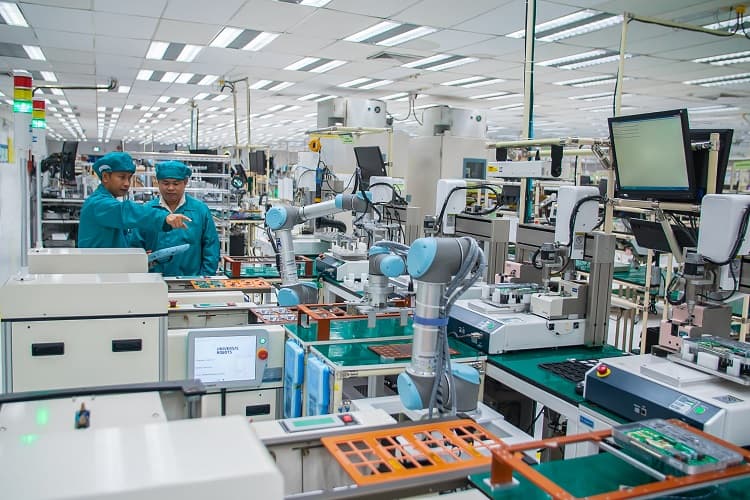
A new class of robots, dubbed “collaborative robots” or cobots could potentially improve the productivity of Malaysia’s small and medium enterprises (SMEs) in the manufacturing sector by up to 30%, says Denmark-based robot manufacturer Universal Robots (UR).
Unlike traditional robots designed to work autonomously without any human contact, cobots, the fastest-growing segment of industrial automation, are meant to operate with and in close proximity with humans.
The annual revenue for cobot arms is expected to reach US$11.8 billion (RM51.2 billion) by 2030, up from US$1.9 billion in 2018 according to ABI Research.
“As companies face rising costs for raw materials and a weak currency, investing in innovative automation technology is necessary to remain competitive.
“[Cobots] will play a major role in the Fourth Industrial Revolution. With the assistance of cobots, local manufacturers can achieve higher levels of efficiency and rapid productivity gains,” says Darrell Adams, UR’s head of Southeast Asia and Oceania.
The use of cobots can help expand the manufacturing sector’s contribution to the economy and boost SMEs’ innovation and capacity, adds Adams.
According to UR, the average automation levels among Malaysia’s local manufacturing firms are still low with about 80% of companies automating less than 50% of their processes. Firms that have gone the automation route have increased production by as much as 300%, the company adds. They were able to reduce defects by 90% and increase profits by 20%.
“Tomorrow’s workplaces will be run by highly skilled workers assisted by intelligent devices. Cobots help to automate and streamline repetitive and potentially unsafe processes, thus ensuring a safe work environment while increasing productivity and efficiency,” says Adams.
Founded in 2005, UR launched its first cobot in 2008. The company offers seven models of simple, flexible and affordable collaborative robot arms, namely UR3, UR5, UR10 from the CB3 series and UR3e, UR5e, UR10e and UR16e from the e-Series, each named after their payloads in kilos. These cobots can be floor, ceiling or wall-mounted, as required.
They come with a tablet-sized touch screen user interface, where the user guides the robot arm by indicating movements on the screen.
The company says that its customers typically see a return on investment (ROI) within the first year. One of its customers is Benchmark Electronics, a US-based global engineering, manufacturing and integrated technology solutions provider that has deployed six UR industrial cobots in its assembly and testing processes in its Korat, Thailand operations.
Benchmark Thailand needed a robotics platform that was easy to understand, learn and deploy. Unlike some platforms, the UR cobots use a simple touch screen teach pendant on free drive mode that operators can learn quickly, create programmes for and tweak easily.
“Through UR’s cobots, we see greater consistency in our production output and minimal human error. We have improved operational efficiency by 25% and saved manufacturing space by 10%. This will be good for new business opportunities. We expect to achieve ROI within 18 months,” says Boonlert Aukkarapichata, director of operations at Benchmark Thailand.
He added that operators have been transferred to higher-skilled jobs, involving complex assembly processes, following the integration of cobots in the production process.